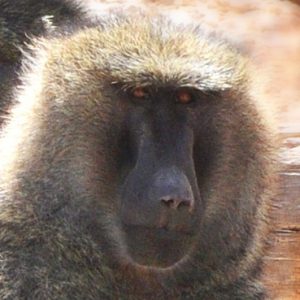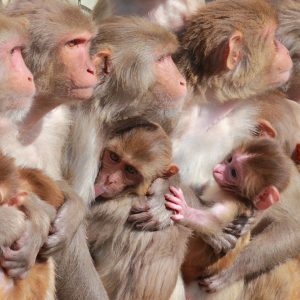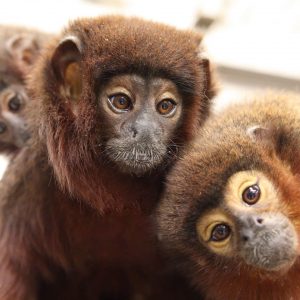Home / Animal Groups / Primates
Animal Group: Primates
Nonhuman primates have a rich history of contributing to significant medical advances such as the polio vaccine, organ transplantation, blood transfusions, and surgical procedures to treat debilitating neurological symptoms like tremors and stiffness.
Nonhuman primates are currently vital to the quest for treatments for Alzheimer’s, Parkinson’s, prostate cancer, coronary heart disease, polycystic ovary syndrome, Ebola, malaria, and AIDS.
Rhesus macaques are one of the most common species of nonhuman primates needed for biomedical research. Other species of nonhuman primates important for the advancement of science and medicine include cynomolgus and pigtail macaques, baboons, marmosets, titi monkeys, and lemurs.
Although nonhuman primates make up less than one-half of one percent of animal models in biomedical research today, they continue to be essential to the development of lifesaving cures and treatments.
Did you Know?

Explore Primates by Species

Baboon
Baboons, closely resembling humans in physiology, serve as vital models in various research areas such as neonatal lung disease, atherosclerosis, pregnancy, nutrition, liver disease, brain imaging, epilepsy, and xenotransplantation. Read More →

Rhesus macaque
Rhesus macaque monkeys, owing to their anatomical and physiological likeness to humans, have been instrumental in developing life-saving vaccines and treatments like those for polio, smallpox, rabies, and HIV/AIDS. They've also contributed to behavioral discoveries, showing promise in neural mechanism studies. Read More →

Marmoset
The common marmoset, due to its size and similarities with humans, is crucial in safety, reproductive biology, neuroscience, and drug development studies. In multiple sclerosis research, its immunological likeness aids therapy development. Read More →

Titi Monkey
Titi monkeys, with their unique capacity for social attachment, are pivotal in studying neurotransmitters' role in attachment biology. Their involvement in visualizing oxytocin receptors aids research in autism spectrum disorder due to biological similarities to humans. Read More →





